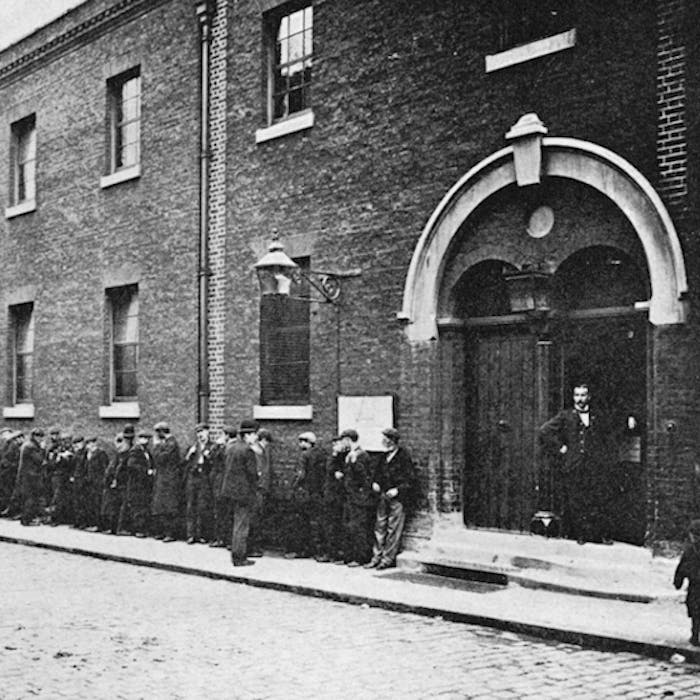
The workhouse: a British institution
The workhouse has come to be popularly associated with Charles Dickens' portraits of poverty in Victorian England. However, public institutions to organise work for the worst off in society have a much longer history, and can be traced back to a Poor Law Act of 1388, immediately after the Black Death.
In the aftermath of the plague, labour shortages were a major problem. Land owners and other authorities became anxious about this shift in the balance of power, and looked to strengthen legal restrictions on their peasantry to stop them seeking higher paid work in other parishes. The Act made each subdivision of a county responsible for its peasant inhabitants, differentiating between 'beggars capable of work' and those 'incapacitated by age or infirmity'.
By 1576 the Poor Relief Act stipulated that if a person was able and willing, they needed to work in order to receive support. The first officially documented workhouse to provide for this institutionally dates to 1652.
Further Acts followed, which formalised the structure and practice of the workhouse. A 1723 Workhouses Test Act obliged those looking to receive relief to enter the workhouse, and work for a set amount of time.
By the 1830's, most parishes had at least one workhouse. Inhabitants worked on a factory-like production line doing manual labour like cleaning, cooking and using machinery. Mortality rates were high, because diseases like smallpox and measles spread within the cramped facilities.
The 1834 New Poor Laws formally established the notorious Victorian version of the workhouse. These discouraged relief for anyone not entering the institutions, which were run by 'Guardians' (often local businessmen) - with some earning fearsome reputations, and others as being more charitable. They lasted almost a century.
New legislation in 1929 allowed local authorities to take over the workhouses as hospitals. The following year, the remaining workhouses were officially closed.
Some former workhouses have been preserved, and are now open to the public as museums. These include The Workhouse, Southwell in Nottinghamshire, run by the National Trust and Ripon Workhouse Museum in Yorkshire.
Further reading
- Welfare and the workhouse - The History Press
- What are workhouses now? - The Workhouse: Story of an Institution
- Ripon Workhouse Museum
Links to external websites are not maintained by Bite Sized Britain. They are provided to give users access to additional information. Bite Sized Britain is not responsible for the content of these external websites.
